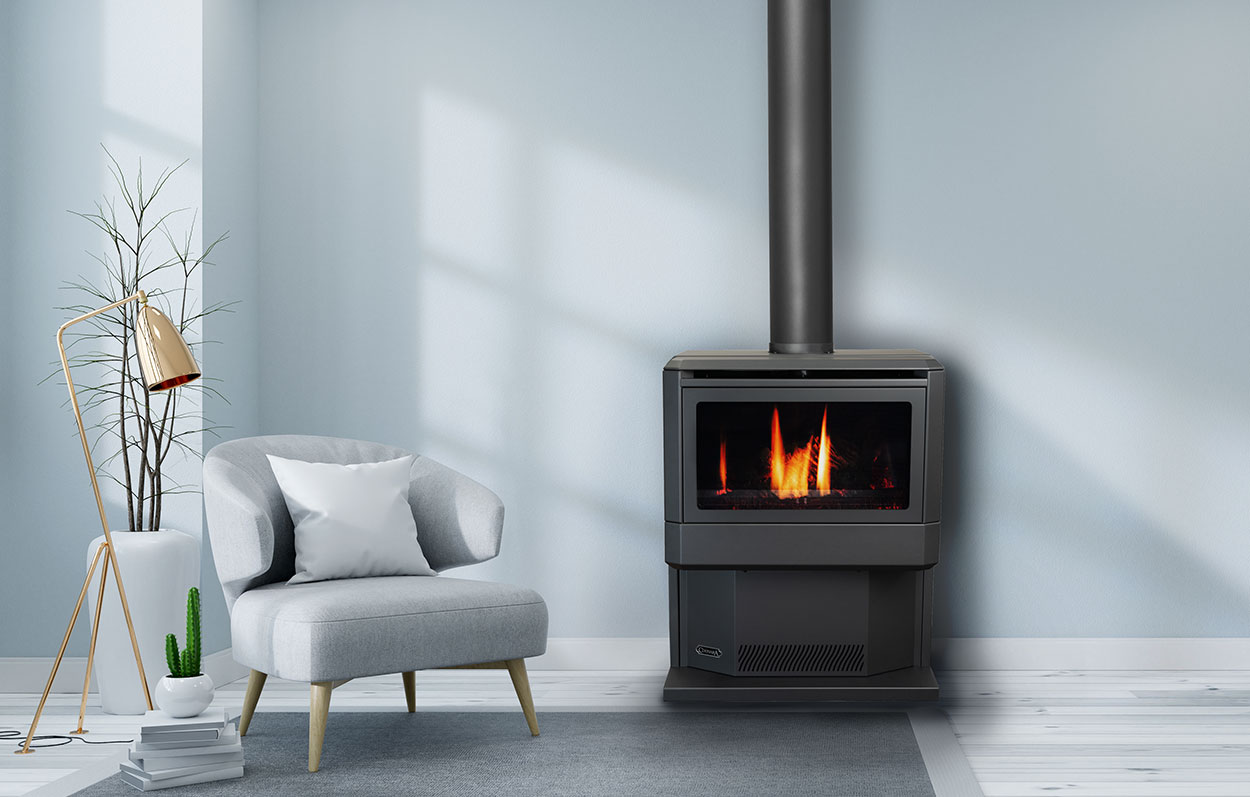When it comes to installing a fireplace in your home, understanding the distinction between combustible and non-combustible materials is not just about aesthetics - it's about safety, compliance with Australian building codes, and ensuring the longevity of your investment. This blog post delves into the critical differences and why the choice of materials is pivotal for your fireplace's installation.
Understanding Non-Combustible Materials
Non-combustible materials, as the term suggests, are those that do not ignite or burn under standard fire or heat exposure levels. These materials are indispensable in fireplace construction, ensuring your home's safety and structural integrity. Common non-combustible materials include brick, concrete blocks, metal, and certain glass types. These materials have been rigorously tested to withstand direct flame contact and high temperatures, adhering to Australia's strict building regulations.
The Significance of Clearance to Combustibles
The "clearance to combustibles" is a critical measurement indicating the minimum safe distance between the fireplace and any combustible materials. This clearance is determined through extensive testing and varies depending on the fireplace model. Adhering to these clearances is non-negotiable for safety, preventing potential fire hazards and damage from heat exposure. Professional installation by certified experts is paramount to ensure compliance with these specifications.
The Necessity of Non-Combustible Materials in Fireplace Construction
Given the intense heat produced by fireplaces, using non-combustible materials in their construction is not a preference but a necessity. While modern fireplaces are designed to contain flames within the firebox, the surrounding areas can still be subjected to significant heat. This heat can deform, crack, or even ignite combustible materials, posing a risk to your home. Therefore, incorporating non-combustible materials for the fireplace's immediate surroundings and structural elements is essential.
Exploring Zero-Clearance Fireplaces
Zero-clearance fireplaces offer a revolutionary design that minimises the required clearance to combustible materials. These fireplaces can be installed closer to combustible materials without the same risk level, thanks to innovative cooling technologies and design efficiencies. They are an excellent choice for homes where space is a premium or for those seeking a sleek, modern aesthetic without compromising safety.
Finishing Materials for Zero-Clearance Fireplaces
The versatility of zero-clearance fireplaces extends to the finishing materials, allowing homeowners to personalise their fireplaces with various materials, including tiles, stone, or even certain wallpapers. This flexibility enables the creation of a unique feature wall or design element that can enhance the beauty of any home. However, it's crucial to consult the manufacturer's guidelines to ensure your chosen materials are safe and appropriate for use with your specific fireplace model.
Summing Up
Choosing the right materials for your fireplace isn't just a matter of design; it's a critical decision for safety and compliance. Whether opting for a traditional setup or a modern zero-clearance fireplace, understanding and applying the principles of non-combustible materials and clearance requirements will ensure your fireplace is a safe, warm, and inviting centrepiece for your home. At Coonara, we're committed to helping you make informed decisions for a cosy, safe, and stylish home environment.
Frequently Asked Questions
What exactly are non-combustible materials, and why are they important for fireplaces?
Non-combustible materials are those that do not ignite, burn, or release flammable vapours when exposed to fire or high temperatures. These materials are crucial for fireplace construction because they significantly reduce the risk of fire spreading and ensure the structure around the fireplace remains intact and safe under high heat conditions.
How do I know the clearance to combustibles for my fireplace?
The clearance to combustibles is specific to each fireplace model and is determined through testing by the manufacturer. This information is usually found in the fireplace's installation manual or manufacturer's specifications. Always consult these documents or contact a professional installer to ensure you're meeting the required safety standards.
Can I use wood or other combustible materials around my fireplace?
Combustible materials like wood can be used in the construction around your fireplace, but only beyond the specified clearance to combustibles. Within this clearance zone, only non-combustible materials must be used to prevent fire risks. For zero-clearance fireplaces, consult the manufacturer's guidelines, as these models have different requirements.
What are zero-clearance fireplaces, and how are they different?
Zero-clearance fireplaces are designed to be installed with minimal clearance to combustible materials, making them ideal for tighter spaces or for a sleeker look. They achieve this through advanced design and cooling technologies that manage heat distribution, reducing the risk of damage to nearby combustible materials.
Can I hang a TV or artwork above my fireplace?
For traditional fireplaces, caution is advised when hanging TVs or artwork above them due to the heat generated. However, with zero-clearance fireplaces featuring advanced cooling systems, it may be safe to hang these items directly above. Consult with your Coonara dealer and always refer to your fireplace manufacturer guidelines to ensure safety.
Are there any specific Australian regulations I should be aware of when installing a fireplace?
Yes, Australia has specific building codes and standards that govern the installation of fireplaces, including the use of non-combustible materials and clearance to combustibles. It's crucial to consult the National Construction Code (NCC) and any local regulations, or work with a certified professional, to ensure your fireplace installation is compliant and safe.



